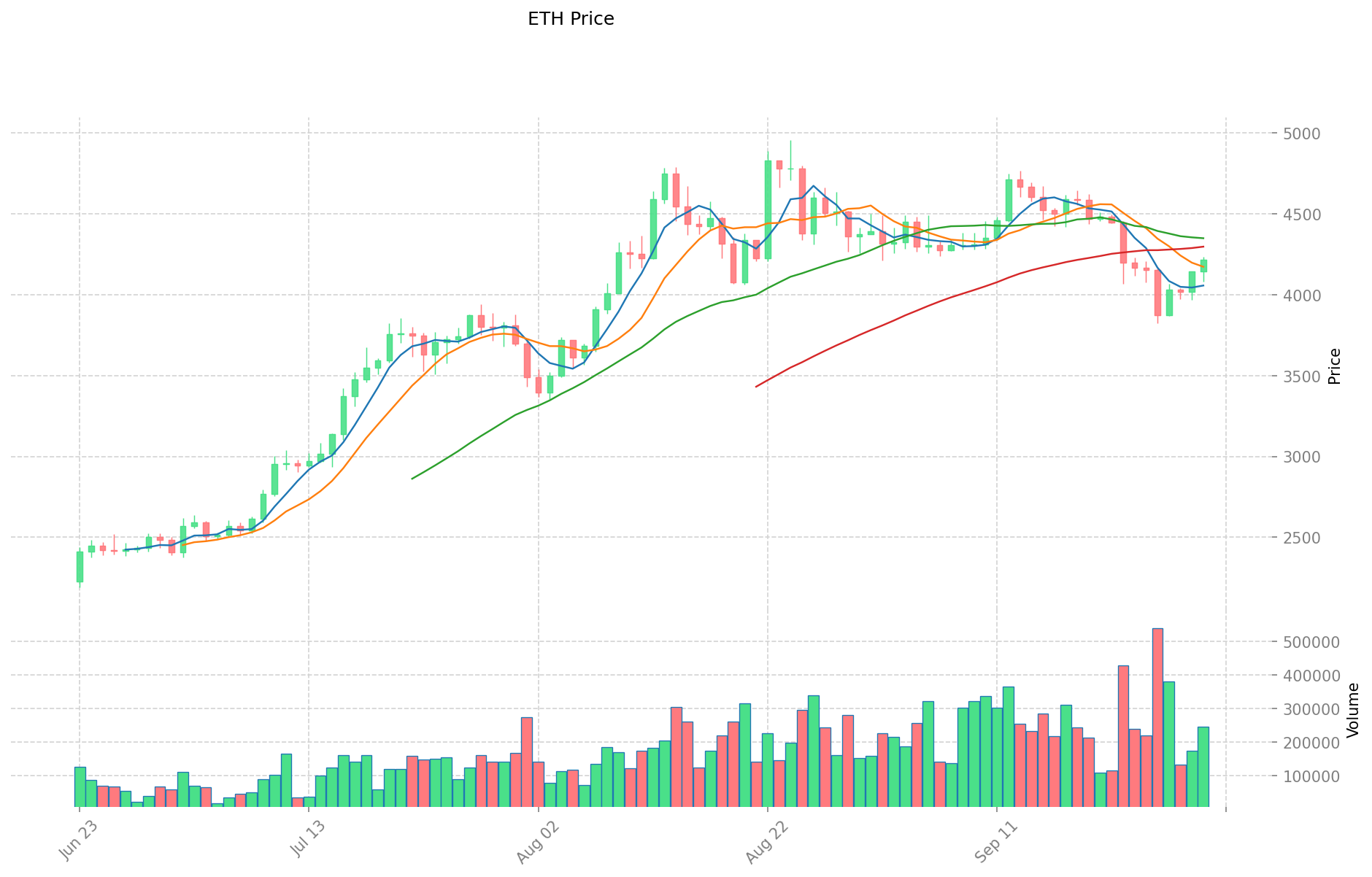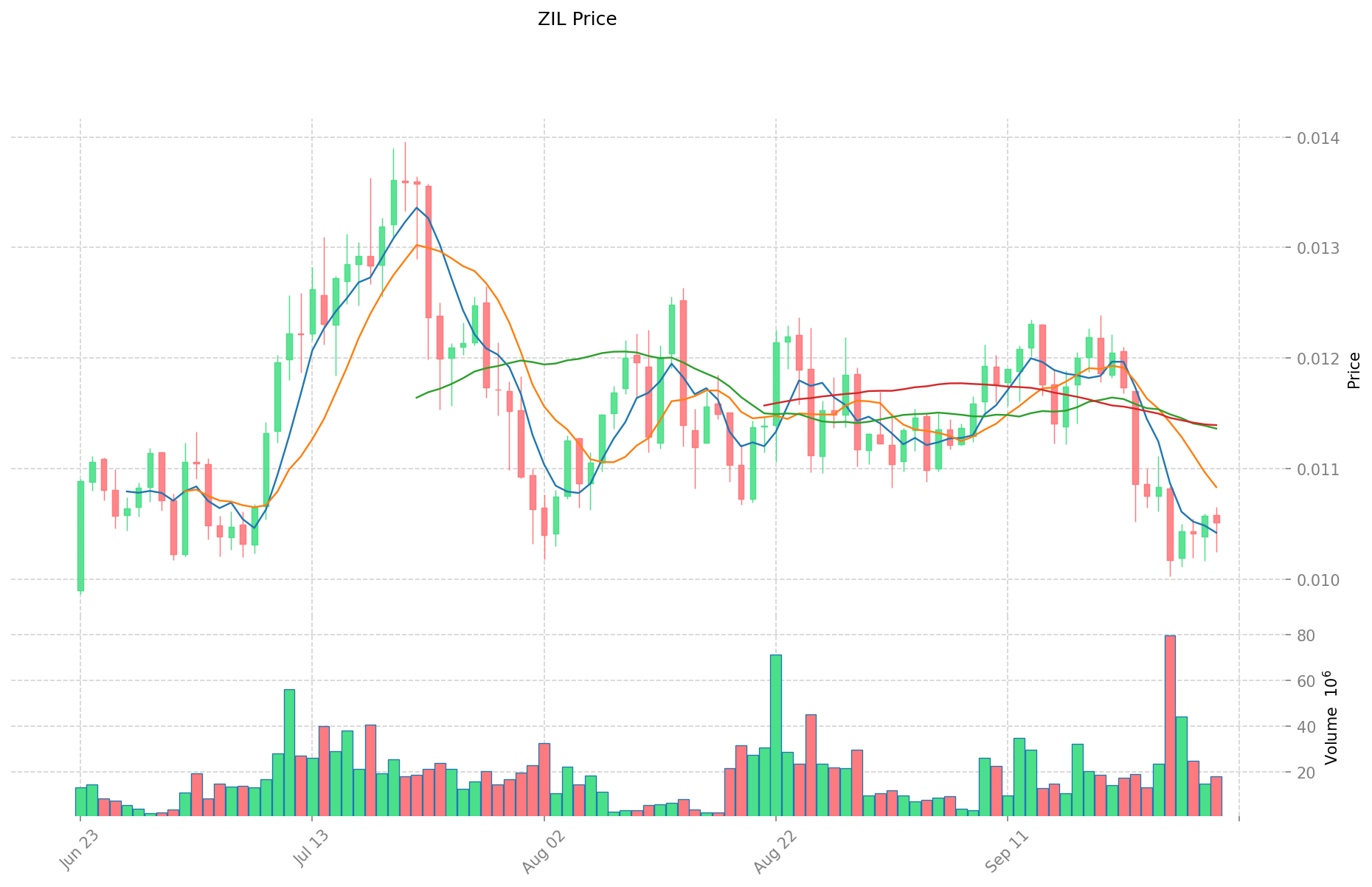ETH vs ZIL: A Comparative Analysis of Ethereum and Zilliqa Blockchain Platforms
Introduction: ETH vs ZIL Investment Comparison
In the cryptocurrency market, the comparison between Ethereum (ETH) and Zilliqa (ZIL) has always been a topic that investors can't ignore. The two not only have significant differences in market cap ranking, application scenarios, and price performance, but also represent different positioning in the crypto asset space.
Ethereum (ETH): Since its launch in 2015, it has gained market recognition for its smart contract and decentralized application (DApp) capabilities.
Zilliqa (ZIL): Introduced in 2018, it has been hailed as a high-throughput public blockchain platform, aiming to solve transaction speed and scalability issues.
This article will comprehensively analyze the investment value comparison between ETH and ZIL, focusing on historical price trends, supply mechanisms, institutional adoption, technological ecosystems, and future predictions, attempting to answer the question investors are most concerned about:
"Which is the better buy right now?" Here is the report based on the provided template and data:
I. Price History Comparison and Current Market Status
Ethereum (ETH) and Zilliqa (ZIL) Historical Price Trends
- 2021: ETH price surged to an all-time high of $4,946.05 due to increased institutional adoption and DeFi growth.
- 2020: ZIL experienced significant price appreciation, rising from $0.00239616 to over $0.08 by year-end, driven by mainnet launch and staking implementation.
- Comparative analysis: During the 2022 bear market, ETH dropped from its all-time high to around $1,000, while ZIL declined from its peak of $0.255376 to below $0.02.
Current Market Situation (2025-09-30)
- ETH current price: $4,148.94
- ZIL current price: $0.010221
- 24-hour trading volume: ETH $1,101,606,348 vs ZIL $223,918
- Market Sentiment Index (Fear & Greed Index): 50 (Neutral)
Click to view real-time prices:
- View ETH current price Market Price
- View ZIL current price Market Price


II. Core Factors Affecting ETH vs ZIL Investment Value
Supply Mechanism Comparison (Tokenomics)
- ETH: Post-merge deflationary model with fee burning mechanism; no maximum supply cap but issuance rate significantly reduced
- ZIL: Fixed maximum supply of 21 billion tokens with reducing emission schedule
- 📌 Historical pattern: ETH's deflationary mechanism has historically created upward price pressure during high network usage periods.
Institutional Adoption and Market Applications
- Institutional holdings: ETH has gained significant institutional interest with multiple ETF products and corporate treasuries
- Enterprise adoption: ETH dominates in DeFi protocols, settlement layers, and institutional portfolio allocations while ZIL has limited enterprise integration
- Regulatory stance: ETH has achieved clearer regulatory classification in major markets, while ZIL faces greater regulatory uncertainty
Technological Development and Ecosystem Building
- ETH technological upgrades: Ongoing scalability improvements including Pectra upgrade with multiple EIPs for enhanced functionality and reduced fees
- ZIL technological development: Focus on sharding technology for improved throughput
- Ecosystem comparison: ETH leads with extensive DeFi ($200B+ TVL), NFT marketplaces, and thousands of dApps, while ZIL's ecosystem remains relatively limited
Macroeconomic Factors and Market Cycles
- Performance during inflation: ETH shows stronger correlation with technology stocks while maintaining partial inflation hedge characteristics
- Macroeconomic monetary policy: Both assets demonstrate sensitivity to interest rates and USD strength, with ETH showing greater institutional liquidity flows during rate cut environments
- Geopolitical factors: ETH benefits more from increased cross-border transaction demand during geopolitical uncertainty
III. 2025-2030 Price Prediction: ETH vs ZIL
Short-term Prediction (2025)
- ETH: Conservative $3,247.32 - $4,163.23 | Optimistic $4,163.23 - $4,621.19
- ZIL: Conservative $0.008188 - $0.010235 | Optimistic $0.010235 - $0.01402195
Mid-term Prediction (2027)
- ETH may enter a growth phase, with estimated prices ranging from $2,826.39 to $5,498.60
- ZIL may enter a growth phase, with estimated prices ranging from $0.00902359 to $0.02120543
- Key drivers: Institutional capital inflow, ETF, ecosystem development
Long-term Prediction (2030)
- ETH: Base scenario $6,840.97 - $9,714.18 | Optimistic scenario $9,714.18+
- ZIL: Base scenario $0.02035821 - $0.02890866 | Optimistic scenario $0.02890866+
Disclaimer
ETH:
| 年份 | 预测最高价 | 预测平均价格 | 预测最低价 | 涨跌幅 |
|---|---|---|---|---|
| 2025 | 4621.1853 | 4163.23 | 3247.3194 | 0 |
| 2026 | 5885.558251 | 4392.20765 | 2503.5583605 | 5 |
| 2027 | 5498.604757035 | 5138.8829505 | 2826.385622775 | 23 |
| 2028 | 6276.11774744565 | 5318.7438537675 | 2978.4965581098 | 28 |
| 2029 | 7884.505888824942 | 5797.430800606575 | 3478.458480363945 | 39 |
| 2030 | 9714.17504949637707 | 6840.9683447157585 | 5472.7746757726068 | 64 |
ZIL:
| 年份 | 预测最高价 | 预测平均价格 | 预测最低价 | 涨跌幅 |
|---|---|---|---|---|
| 2025 | 0.01402195 | 0.010235 | 0.008188 | 0 |
| 2026 | 0.017950143 | 0.012128475 | 0.0084899325 | 18 |
| 2027 | 0.02120542569 | 0.015039309 | 0.0090235854 | 47 |
| 2028 | 0.01975338040605 | 0.018122367345 | 0.0170350253043 | 77 |
| 2029 | 0.021778554956853 | 0.018937873875525 | 0.016097192794196 | 85 |
| 2030 | 0.028908664470988 | 0.020358214416189 | 0.016693735821275 | 99 |
IV. Investment Strategy Comparison: ETH vs ZIL
Long-term vs Short-term Investment Strategy
- ETH: Suitable for investors focused on ecosystem potential and institutional adoption
- ZIL: Suitable for investors seeking high-risk, high-reward opportunities in emerging blockchain technologies
Risk Management and Asset Allocation
- Conservative investors: ETH 70% vs ZIL 30%
- Aggressive investors: ETH 60% vs ZIL 40%
- Hedging tools: Stablecoin allocation, options, cross-currency portfolios
V. Potential Risk Comparison
Market Risk
- ETH: High correlation with broader crypto market movements, sensitive to macroeconomic factors
- ZIL: Lower liquidity and higher volatility, susceptible to sudden price swings
Technical Risk
- ETH: Scalability challenges, network congestion during high demand periods
- ZIL: Relatively untested sharding technology, potential security vulnerabilities
Regulatory Risk
- Global regulatory policies may have a more significant impact on ETH due to its larger market presence and wider adoption
VI. Conclusion: Which Is the Better Buy?
📌 Investment Value Summary:
- ETH advantages: Strong institutional adoption, extensive DeFi ecosystem, ongoing technological improvements
- ZIL advantages: Potential for high growth, focus on scalability through sharding technology
✅ Investment Advice:
- New investors: Consider allocating a larger portion to ETH for its established market position and ecosystem
- Experienced investors: Explore a balanced portfolio with both ETH and ZIL, adjusting based on risk tolerance
- Institutional investors: Focus primarily on ETH for its liquidity and regulatory clarity, with potential small allocation to ZIL for diversification
⚠️ Risk Warning: The cryptocurrency market is highly volatile. This article does not constitute investment advice. None
VII. FAQ
Q1: What are the main differences between Ethereum (ETH) and Zilliqa (ZIL)? A: Ethereum is a well-established platform for smart contracts and decentralized applications, while Zilliqa is a newer blockchain focusing on high throughput and scalability through sharding technology. ETH has a larger market cap, more institutional adoption, and a more extensive DeFi ecosystem, whereas ZIL aims to solve transaction speed issues but has a smaller ecosystem and market presence.
Q2: Which cryptocurrency has shown better historical price performance? A: Historically, Ethereum (ETH) has shown stronger price performance and reached higher all-time highs. In 2021, ETH surged to $4,946.05, while ZIL's peak was $0.255376. During market downturns, ETH has also demonstrated more resilience, though both cryptocurrencies experienced significant drops in the 2022 bear market.
Q3: How do the supply mechanisms of ETH and ZIL differ? A: ETH has adopted a post-merge deflationary model with a fee-burning mechanism and no maximum supply cap, but with a significantly reduced issuance rate. ZIL, on the other hand, has a fixed maximum supply of 21 billion tokens with a reducing emission schedule.
Q4: Which cryptocurrency is more suitable for institutional investors? A: Ethereum (ETH) is generally more suitable for institutional investors due to its higher liquidity, greater regulatory clarity, and more extensive institutional adoption. ETH has multiple ETF products and is held in corporate treasuries, while ZIL has limited enterprise integration and faces greater regulatory uncertainty.
Q5: What are the projected price ranges for ETH and ZIL by 2030? A: Based on the provided predictions, by 2030:
- ETH's base scenario ranges from $6,840.97 to $9,714.18, with potential for higher in an optimistic scenario.
- ZIL's base scenario ranges from $0.02035821 to $0.02890866, with potential for higher in an optimistic scenario. However, these are projections and actual prices may vary significantly due to market conditions and other factors.
Q6: How should investors allocate their portfolio between ETH and ZIL? A: The allocation depends on the investor's risk tolerance. A suggested conservative allocation is 70% ETH and 30% ZIL, while a more aggressive allocation could be 60% ETH and 40% ZIL. New investors might consider allocating more to ETH due to its established market position, while experienced investors could explore a balanced portfolio with both assets.
Q7: What are the main risks associated with investing in ETH and ZIL? A: Both cryptocurrencies face market risks, including high volatility and sensitivity to macroeconomic factors. ETH faces technical risks related to scalability and network congestion, while ZIL's risks include its relatively untested sharding technology and potential security vulnerabilities. Regulatory risks are also present, with ETH potentially more impacted due to its larger market presence.
Share
Content